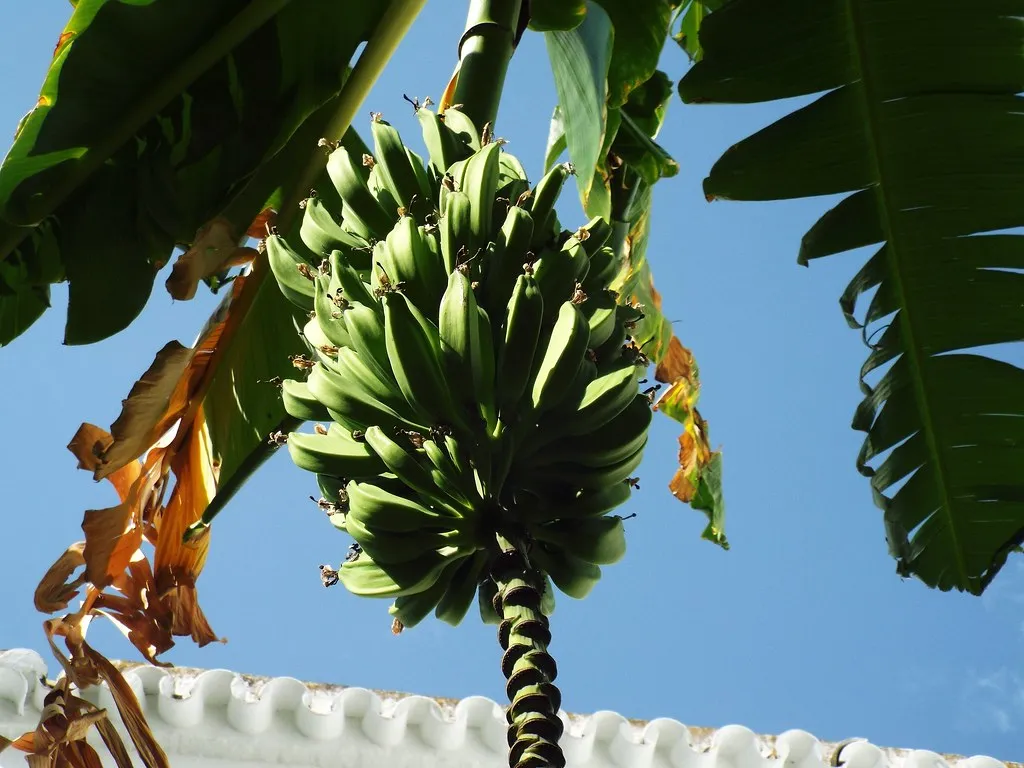The Truth About Banana Trees: Do You Really Need Two Trees to Produce Fruit?
Have you ever wondered if you need two banana trees to produce fruit? This is a common question that many people ask when considering growing their own banana trees. To answer this question, we must first understand what a banana tree is and how it produces fruit. In this article, we will explore the concept of cross-pollination and its role in banana production, as well as other factors that affect banana production. So, whether you are a banana enthusiast or simply curious, keep reading to learn the answer to the question, “Do you need two banana trees to produce fruit?”
What is a banana tree?
Banana trees are a fascinating and unique species of plant that have captured the attention of people around the world. These tropical trees belong to the Musaceae family, which includes over 70 different species.
At their core, banana trees are herbaceous plants that grow from underground rhizomes. They can reach up to 30 feet in height and produce large leaves that can measure up to 9 feet long and 2 feet wide. The leaves themselves are sturdy structures that protect the tree from high winds, heavy rain, and other environmental factors.

One of the most interesting features of banana trees is their fruit production. Bananas themselves are actually berries – elongated fruits that grow in clusters called hands. Each hand can contain anywhere from 10-20 individual bananas, depending on the variety.
While many people may think of bananas as a single type of fruit, there are actually dozens of different varieties with varying colors, textures, and flavors. Some popular types include Cavendish bananas (the most widely grown variety), plantains (a starchy cooking banana), and red bananas (which have a sweeter flavor than traditional yellow bananas).
Overall, banana trees represent an incredibly diverse and fascinating family of plants with a rich cultural history spanning centuries. Whether you’re interested in trying different types of bananas or simply appreciate their unique beauty as tropical foliage plants, there’s something for everyone when it comes to these remarkable trees!
How does a banana tree produce fruits?
Banana trees are fascinating plants that produce one of the world’s favorite fruits. The process by which they produce fruit is complex and unique, involving a number of physiological processes.
The first step in banana fruit production is the emergence of a flower bud from the top of the tree. This bud then develops into an inflorescence, which is made up of numerous individual flowers. These flowers are arranged in a spiral pattern around a central axis and are protected by large bracts.
Once pollination occurs, each individual flower on the inflorescence begins to develop into a tiny fruit called a “finger”. As these fingers grow and mature, they merge together to form what we know as a bunch or cluster of bananas.
Interestingly, bananas do not require fertilization to produce fruit – instead, they undergo parthenocarpy. This means that the female reproductive organs within each flower can develop fruit without any input from male gametes.
Throughout this entire process, banana trees require warm temperatures and consistent moisture to thrive. They also need plenty of nutrients like potassium and magnesium to support their growth and development.
In conclusion, understanding how banana trees produce fruit is just one aspect of appreciating these amazing plants. From their unique growth habits to their delicious flavor profiles, bananas are truly an incredible gift from nature!
The concept of cross-pollination and its role in banana production is important.
Cross-pollination is a crucial aspect of banana production that often goes unnoticed. This concept refers to the transfer of pollen from one plant to another, which can lead to the formation of new hybrids with unique characteristics.

In banana production, cross-pollination plays a vital role in maintaining genetic diversity and improving crop yields. By introducing pollen from different varieties, farmers can create offspring with desirable traits such as disease resistance, flavor profile, and shelf life.
However, cross-pollination also poses some challenges for banana growers. If not managed properly, it can lead to the spread of diseases or unwanted genetic mutations that could harm the crop’s overall quality.
To address these challenges and maximize the benefits of cross-pollination in banana production, farmers need to adopt best practices such as using sterile pollinators or separating different cultivars during pollination periods.
Overall, understanding the concept of cross-pollination is essential for anyone looking to learn more about bananas and their cultivation process. Whether you are a farmer or just a curious consumer interested in where your favorite fruit comes from – this knowledge will help you appreciate all that goes into producing those delicious bananas we love so much!
Do you need two banana trees to produce fruit? The answer is explained.
The question of whether you need two banana trees to produce fruit is a common one, and the answer is both yes and no. Bananas are self-fertile, meaning they can produce fruit on their own without the need for cross-pollination from another tree. However, having multiple banana trees in close proximity can increase the likelihood of pollination and result in higher yields.
It’s important to note that while bananas may not require cross-pollination, they do rely on wind or insects to help transfer pollen from the male flowers to the female flowers. And since banana plants are clones of each other (meaning they are all genetically identical), having multiple trees can also provide genetic diversity that can help improve disease resistance and overall plant health.

« banana or apple in the morning
can eating a banana affect blood test »
So while it is possible for a single banana tree to produce fruit, having multiple trees nearby can certainly improve your chances of a bountiful harvest. Whether you have one or ten banana trees in your backyard, make sure you’re providing them with proper care and attention so they can thrive and provide you with delicious fruits for years to come.
Other factors that affect banana production include…
While soil quality, climate, and pests are well-known factors that affect banana production, there are other less talked about factors that can also have significant impacts on the crop.
One such factor is the availability and quality of water. Bananas require a lot of water to grow and produce fruit, but if the water is contaminated or lacks essential nutrients, it can lead to stunted growth or disease. Another important factor is the use of pesticides and fertilizers. While these chemicals can help increase yields, they can also harm the environment and lead to health concerns for workers and consumers.
The timing of planting and harvesting also plays a crucial role in banana production. Planting too early or late in the season can result in lower yields or poor fruit quality. Similarly, harvesting at the wrong time can lead to premature ripening or damage to the fruit during transportation.
Finally, labor availability and cost are also important factors in banana production. In many countries where bananas are grown, labor laws may be lax or non-existent which may lead to exploitation of workers who often work long hours under difficult conditions for low pay.
Overall, understanding these lesser-known factors that affect banana production is crucial for ensuring sustainable practices that promote both environmental health and economic stability for communities around the world who rely on this beloved tropical fruit as a vital source of income and nutrition.
Check out our other articles to find out even more about banana.
So, do you need two banana trees to produce fruit? The answer is yes. Though cross-pollination is the primary way for banana plants to reproduce and consume energy from flowering and fruiting, other factors such as fertilization, temperature, climate and weather conditions may also affect their productivity. If you’re looking for more information about bananas or want to discover related topics like how a banana tree grows or what types of bananas exist in nature then be sure to check out our other articles!














